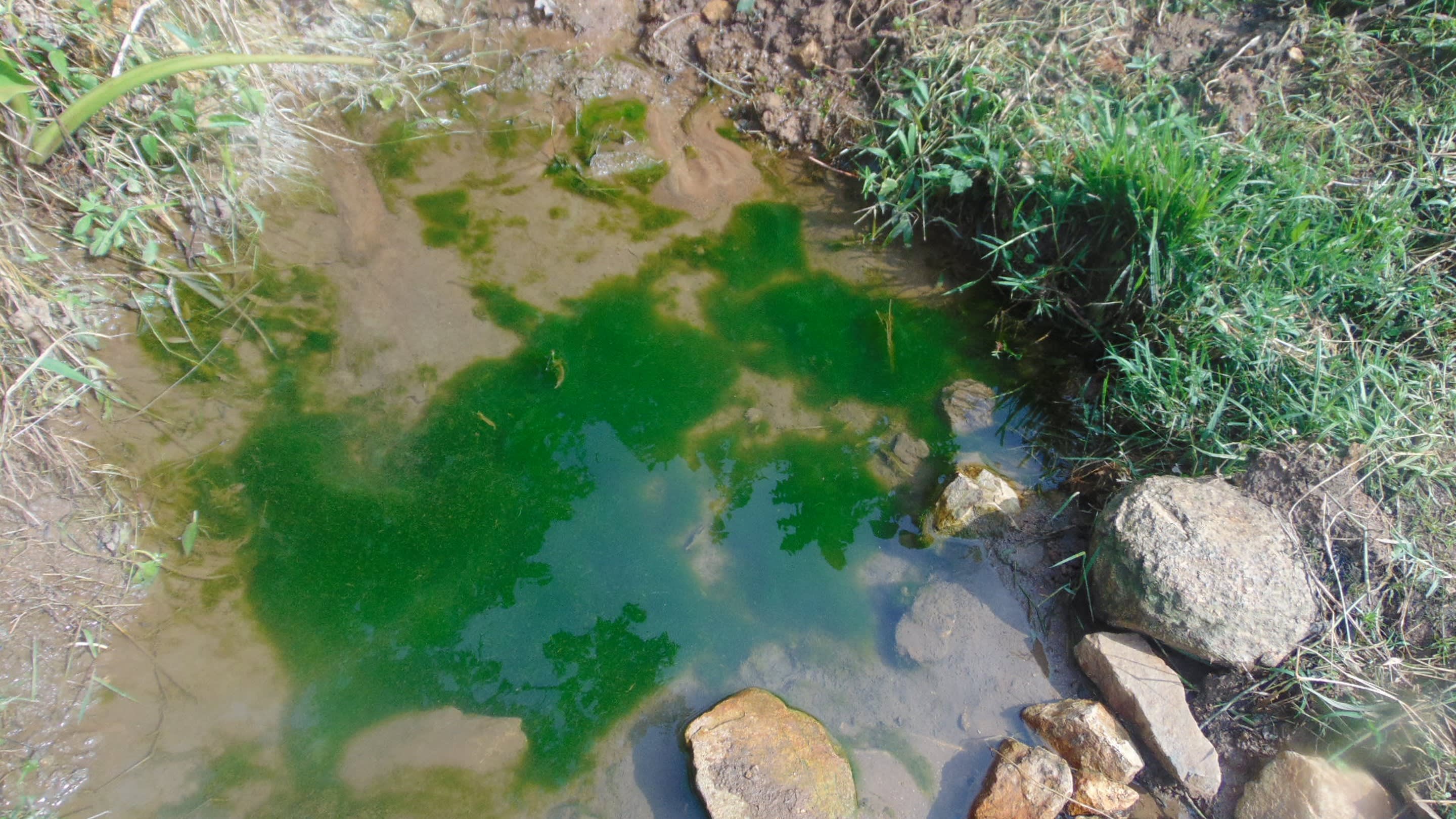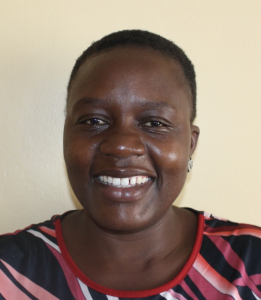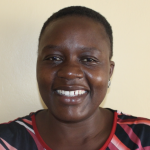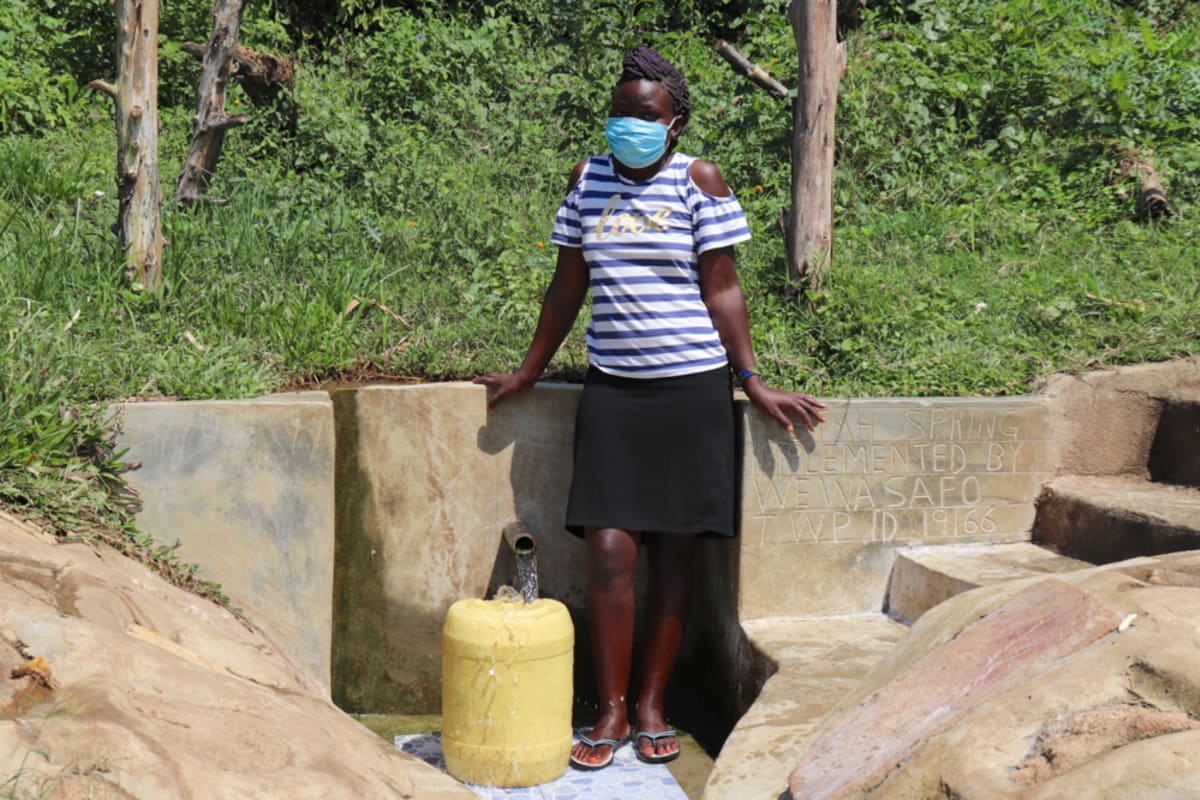Mukangu Village is very rural, highly vegetated, and the buildings are predominantly semi-permanent with mud walls and iron sheet roofs with a few permanent houses. Farming and manual labor are the most common livelihoods here. As we entered the village and walked through different homesteads, we saw women working in the farms and children shelling maize. Sugarcane farming is also practiced at a small scale within some homesteads.
Mr. Aggrey Lusimba and his wife, Mrs. Selestine Lusimba, are one such household that owns a sugarcane plantation that is almost ready for harvesting. They are also the landowners of the area where Metah Spring is located.
Metah Spring is not very far away from most of the 175 people in Mukangu who use it, since the spring is centrally located. The path to the source is a bit steep and difficult to access during the rainy season as it gets slippery. The water quality seems poor as it has a lot of green algae inside the water. It is also not very clear due to the fact that it is open to contaminants from both humans and animals. We would drink this water only if it had undergone water purification like boiling or treatment, reported our teams.
Some community members in Mukangu do boil the water from Metah Spring before drinking it, while the others take it as it is. This latter group believes in a Kiswahili saying, "Maji haina roho mbaya." This is translated as "Water has no bad omen," meaning water naturally should be safe to drink.
There are, however, several known negative consequences of lacking safe water in this community.
"We are only at the mercy of God as the water we take is dirty and we often get sick," said Ruth Shikanga, a farmer in the village.
"We have had outbreaks of water-related diseases as a result of drinking this dirty water. Thank you for considering us [for spring protection]. We are happy that, finally, we shall now drink safe and clean water."
The most common diseases in Mukangu include malaria and other water-related infections, which are in part due to the unsafe water from unprotected Metah Spring.
"I've been married in this community for more than 15 years and at no point did anyone ever think about improving our water source," said Selestine Lusimba, the landowner of Metah Spring in tandem with her husband, Aggrey Lusimba.
"We drank dirty water year in year out. I am so glad that finally, God has answered our prayers."

This community does seem enlightened on some sanitation and hygiene issues. For one, as we walked through homesteads we saw 3 different leaky tins for handwashing around the latrines and each homestead had a dish rack. The greatest area that needs improvement is water handling, including how to prevent contamination from the point of collection to storage and use.
A day in Mukangu starts in the morning with normal morning chores, cleaning the house and the compound, taking breakfast, going to fetch water, and going to work on the farm with activities like plowing, planting, weeding, and harvesting. Later in the day, women prepare lunch for the young ones who go to school at Bukhaywa Primary School. In the evenings some will take maize cereals to the mill for flour, buy food in the market, and prepare supper for the night.
Right now in Makunga it is maize harvesting season, therefore in most homes, you will see the women and children occupied with shelling and drying off the maize. Others are already preparing their plantations for the second planting season. In the second planting season, most people will be planting beans, groundnuts, and vegetables for selling in Kakamega Town.
In this community, people identify strongly with their different cultures. The predominant sub-tribe of Luhya here are the Isukhas. Every Saturday morning in this community is a special day when all the daily activities are put aside between 5:00 am to 11:00 am when the whole village gathers to witness the bullfighting, a special tradition for Isukhas.
All activities stop as men, women, and children gather to see the fight between their bulls. We understand this community calendar and we intend to plan our training on days when the community is not engaged in such an activity as we know that no one will attend the training if it is scheduled on a bullfighting day.
What we can do:
Spring Protection
Protecting the spring will help provide access to cleaner and safer water. Construction will keep surface runoff and other contaminants out of the water. With the community’s high involvement in the process, there should be a good sense of responsibility and ownership for the new clean water source.
Fetching water is a task predominantly carried out by women and young girls. Protecting the spring and offering training and support will, therefore, help empower the female members of the community by freeing up more of their time and energy to engage and invest in income-generating activities.
Training
Community members will attend hygiene and sanitation training for at least 2 days. This training will ensure participants have the knowledge they need about healthy practices and their importance. The facilitator plans to use Participatory Hygiene and Sanitation Transformation (PHAST), Community-Led Total Sanitation (CLTS), Asset-Based Community Development (ABCD), group discussions, handouts, and demonstrations at the spring. One of the most important topics we plan to cover is the handling, storage, and treatment of water. Having a clean water source will be extremely helpful, but it is useless if water gets contaminated by the time it is consumed. We will also emphasize the importance of handwashing.
Training will result in the formation of a committee that will oversee the operations and maintenance of the spring. They will enforce proper behavior around the spring and delegate tasks that will help preserve the site, such as building a fence and digging proper drainage channels. The fence will keep out destructive animals, and the drainage will keep the area’s mosquito population at a minimum.
Sanitation Platforms
On the final day of training, participants will select 5 families that should benefit from new concrete latrine floors. Training will inform the community and selected families on what they need to contribute to make this project a success. They must mobilize locally available materials, including bricks, clean sand, and gravel. The 5 families chosen for sanitation platforms must prepare by sinking a pit for the sanitation platforms to be placed over. All community members must work together to make sure that accommodations and food are always provided for the work teams.

 Protected Spring
Protected Spring
 Rehabilitation Project
Rehabilitation Project












































